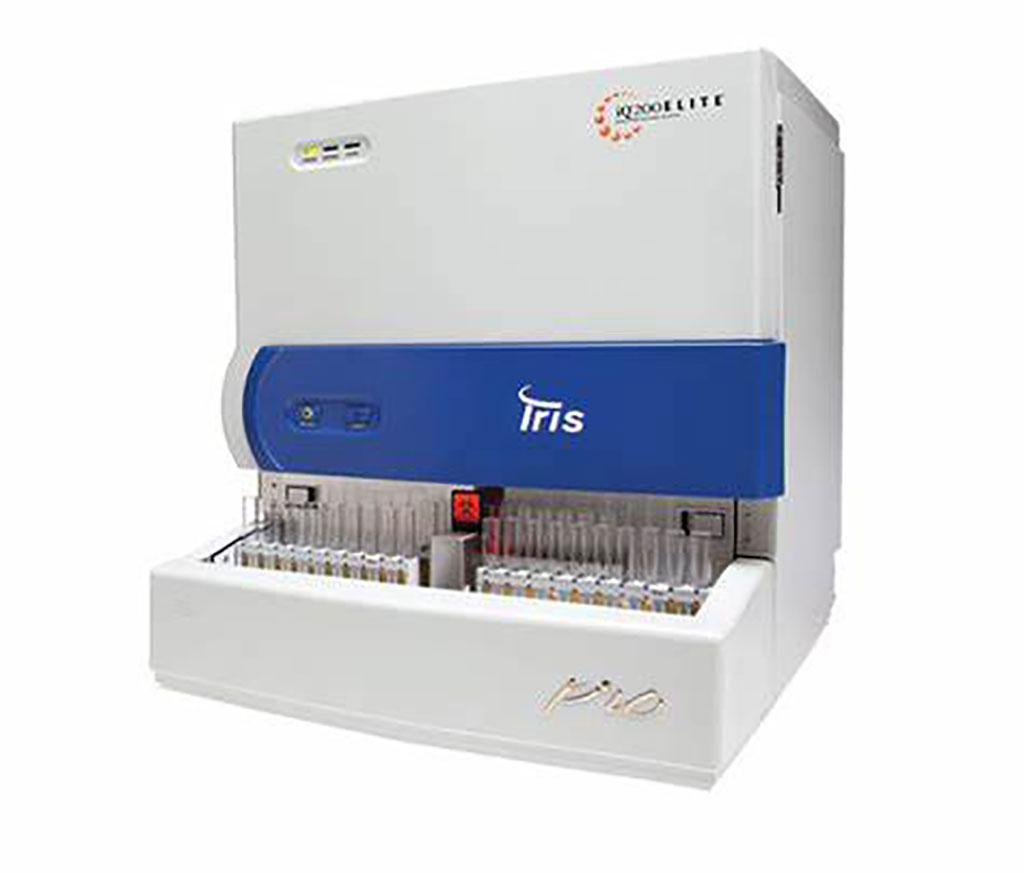Innovative Smartphone and AI-Based Tests Featured at AACC 2022
Posted on 27 Jul 2022
Scientists have developed a cheap, convenient smartphone test for monitoring patients at risk for dangerous blood clots. Research demonstrating that this test works, along with a second study on using artificial intelligence (AI) to improve testing and treatment for people with kidney stones, will be presented at the 2022 AACC Annual Scientific Meeting & Clinical Lab Expo. Both studies could help resolve longstanding challenges in healthcare and laboratory testing.
Test with Smartphone App May Predict Blood Clot Risk

People who take the blood-thinning medication warfarin to prevent blood clots - which can lead to heart attacks - need frequent blood testing to ensure that the drug is working. Currently, this testing occurs in a clinical laboratory or with expensive at-home testing systems. It involves a particular measure of the time it takes for a clot to form, called prothrombin time (PT), and calculating the international normalized ratio (INR) so doctors can compare results between different tests or laboratories.
A team of researchers from the University of Washington (Seattle, WA, USA) developed a test that quickly and inexpensively determines PT/INR using a smartphone. The test uses a smartphone's built-in vibration motor and camera to track movement of a copper particle in a drop of blood. To see whether the test works, the researchers tested blood from 140 anonymous patients. The team also tested blood from 79 patients with known blood-clotting issues. In both groups, the new test produced results similar to laboratory PT/INR tests. As a next step, the researchers are planning to research whether patients can use the new test by themselves at home. The envision it being helpful for people in rural areas, to minimize long and increasingly expensive trips to doctors. The team hopes the test will lead to more people spending more time in the desirable PT/INR range, which would mean they are not at risk for clots or (on the flipside) for uncontrolled bleeding.
"The goal is to decrease complications while making PT/INR testing more convenient and less expensive," said Kelly Michaelsen, MD, PhD, who led the team.
Improving Kidney Stone Analysis and Treatment
Kidney stones are common, affecting more than 1 in 10 people. If left untreated, these hard deposits made of minerals and salts can lead to severe pain, urinary tract infections, and loss of kidney function. Effective treatment and prevention rely on knowing what stones are made of, which is often determined through a manual process using Fourier transform infrared spectroscopy (FTIR). However, mistakes in FTIR interpretation and reporting can lead to inappropriate treatments and undermine efforts to prevent future kidney stones through medication, diet, and lifestyle changes.
To improve diagnosis and better guide treatment, researchers at Mayo Clinic (Rochester, MN, USA) created a group of AI-trained algorithms that analyze FTIR kidney stone composition results. The researchers then conducted a study to determine whether the algorithms could find errors in kidney stone composition results that had been reviewed and reported by a clinical laboratory technologist. Within the 12-month study period, these AI-trained algorithms reviewed manual analyses of 81,517 kidney stones. While the technologist's and AI's interpretations agreed 90% of the time, the researchers determined that manual entry errors and/or incorrect technologist interpretations before use of AI occurred at a rate nearly eight times higher than after the start of AI use.
"Clinical laboratories continuously adopt technology to improve the accuracy of lab tests. By adopting AI, clinical laboratories can reduce errors in results sent to physicians. This study is an example of how the fields of laboratory medicine, data science, information technology, and biostatistics can work together to improve patient care," said Patrick Day, MPH, MLS (ASCP), who led the team.
Related Links:
University of Washington
Mayo Clinic













